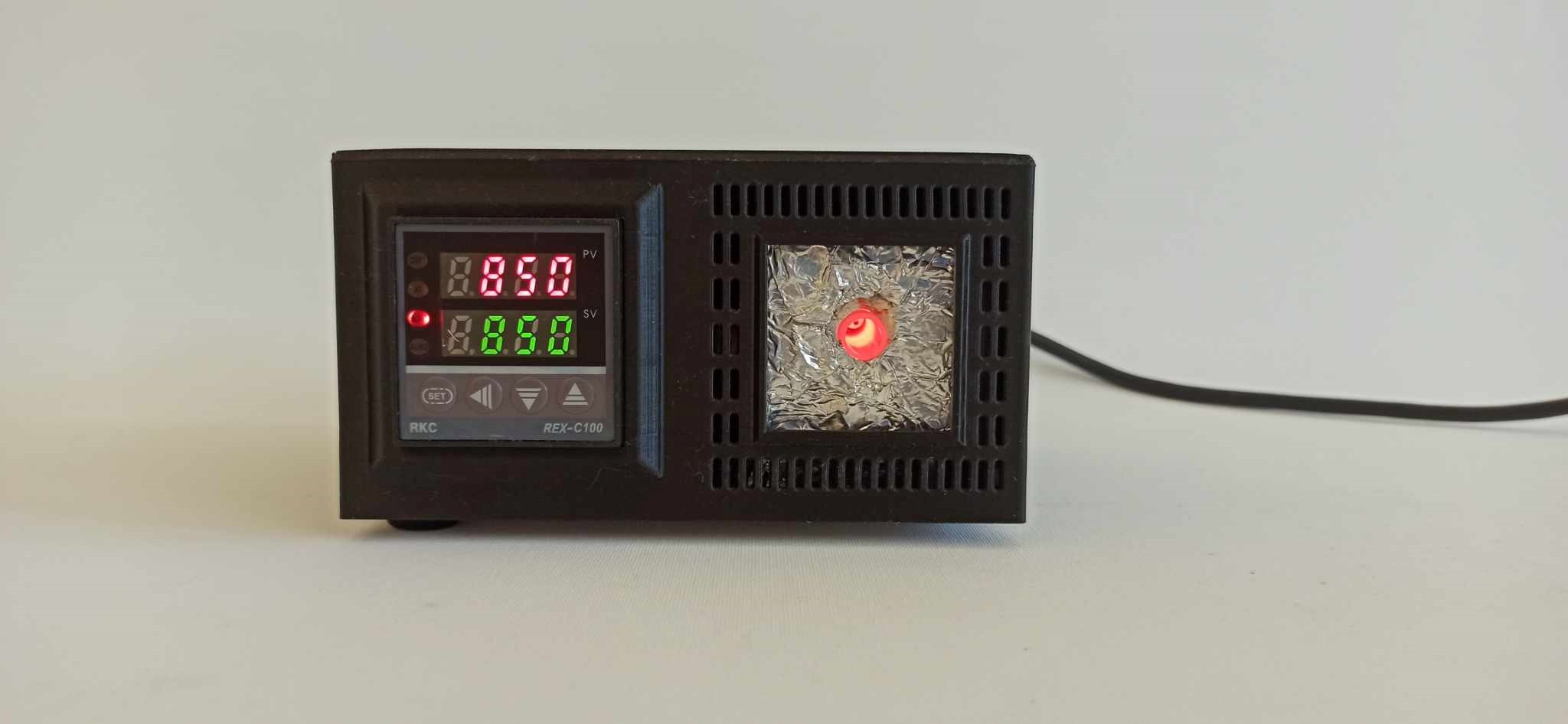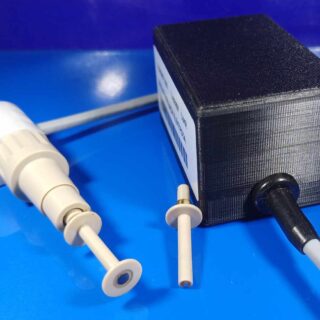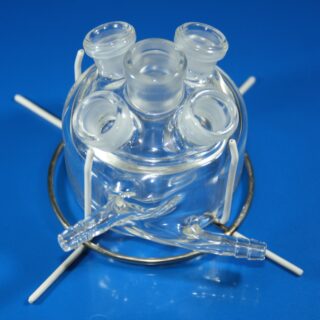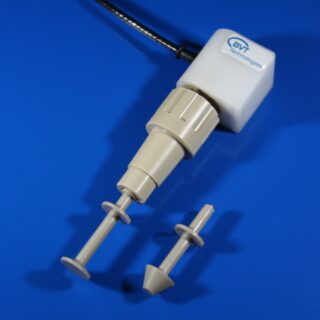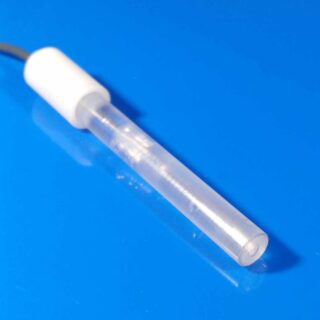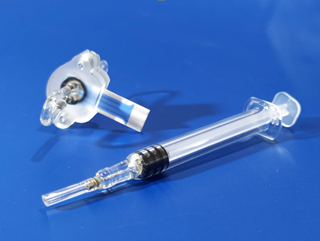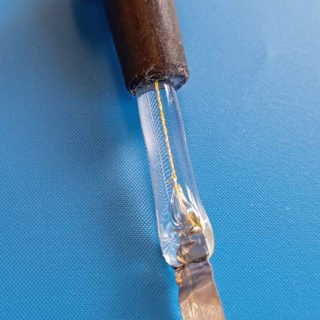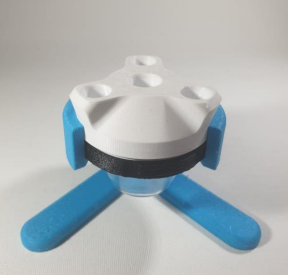Category
- Custom made glass products
- CUSTOMER SERVICES
- NEW PRODUCTS
- Sensors and electrodes
- Custom made and Modified Screen Printed Electrodes
- Stirrers
- Cables and connectors
- Cell
- Potentiostats
- Manual Screen Printer
- Minithermostat
- Pumps
- Accessories
- Kits & Sets
- Discounted SPEs (at a reduced price with visual defects/inconsistancies, but fully functional)
Activation furnance for electrochemical sensors
The activation furnance is a device used for curing individual sensors of the AC1 type. At a defined temperature (up to 1000 °C) depending on the electrode and sensor materials. When the sensor is cured, the surface of the electrodes is cleaned from surface oxides and organic impurities, which results in regeneration of the sensor or its activation. In this way, for example, old sensors with immobilized enzyme layers can be cured for reuse – see example at the end ot the document.
You may also like…
-
Mini Rotating Disk Electrode Kit
Read moreThe Mini Rotating disk electrode (RDE) in general enables defined mass transfer towards electrode surface.
The Mini RDE consists of the body of the RDE (motor) with 6 pcs of interchangeable electrode tips for RDE. The device is equipped by control electronics and SW and powered by USB connection with PC. Rotational speed of Mini RDE is 10 – 1300 rpm.
The Kit also includes:
- TC4 electrochemical glass cell, which openings are suitable for included connector KA1.C.S
- 20 pcs of Screen printed sensors (type AC1., AC2., AC4.)
- classical reference electrode RCEc.
During measuring with Mini RDE in a classic three-electrode connection, it is also advisable to use the classical auxiliary electrode ACEc.
* For this product, we recommend our customers use the Training Service from BVT.
(https://bvt.cz/produkt/offer-of-long-term-automated-measurements-on-bvt-apparatus/)
-
TC5 Electrochemical Glass Cell
Read moreBorosilicate glass cell serves for electrochemical measurements. The cell is jacketed.
The analyzed solution can be thermostated by external thermostat.
Cell openings are designed for electrochemical sensors connector KA1.C, classical electrodes WCEc, ACEc, RCEc and stirrer ST1, ST3 separately.
-
ST1.* Universal Stirrer for screen printed and classical electrodes
View products- The universal stirrer ST1 uses a common micro DC motor
- ST1 allows the solution to be mixed and the particles to be optimally transferred to the surface of the printed or conventional electrodes.
- The construction of stirrer assures the optimum mass transport with the minimum hydrodynamic noise.
- The supply voltage 0 – 5 V and the maximum current of 450 mA mean that it can be used as a USB device.
- The stirrer is manufactured from quality materials and suitable chemical measurements.
- Revolutions range: 120 – 12 000 rpm
-
ST3 Universal Stirrer for screen printed and classical electrodes
Read more- Precision Maxon motor with gearbox and encoder
- ST3 is controlled by PC software
- ST3 allows the solution to be mixed and particles to be optimally transferred to the surface of the printed or conventional electrodes
- The construction of stirrer assures the optimum mass transport with the minimum hydrodynamic noise.
- Stirrer is manufactured from quality and suitable chemical measurements.
- Revolution range: 20-1300 rpm (with resolution 1 rpm)
Related products
-
Mini RCE.GEL.L60.C1 Miniature reference argentochloride gel electrode
Read moreMiniature reference argentochloride gel electrode is designed for potentiometric measurements in connection with Miniature ion selective electrodes for potentiometric measurements of Chloride ions, Sodium ions, Calcium and Potassium ions concentration in aqueous solutions following prior calibration.
The conductive connection of the internal electrolyte (KCl gel) enclosed in a plastic tube is mediated by a porous frit.
Maintenance-free electrode – no need to top up the internal electrolyte (KCl gel).
Electrodes are applicable to all commonly used measuring apparatus, with input resistance of at least 1012 Ω.
Possibility of integration with a FC.1ISE.1REF Flow cell for single ion selective electrode with integrated stirring – possible automation and continuous measurement.
-
SIRE Sensor Cell Set (Sensor with Injectable Recognition Element)
Read moreThe SIRE Sensor Cell Set consists of a sensor with an integrated non-removable specialised chamber.
The set also contains a syringe which will allow the injection of the recognition element (Enzyme).
The SIRE Sensor Cell uses the concept of soluble enzymes into a reaction chamber separated from the sample by a semi permeable dialysis membrane. The analyte (for example maltose), enters into the reaction chamber by diffusion. The analyte reacts with the recognition enzymes creating H2O2 which is oxidized on a screen printed Pt electrode. The current corresponds to the amount of analyte.* For this product, we recommend our customers use the Training Service from BVT.
(https://bvt.cz/produkt/offer-of-long-term-automated-measurements-on-bvt-apparatus/)
-
ACEc.Pt plate Auxiliary Classic Electrode Conic with platinum plate
Read moreACEc.Pt plate is a glass tube with platinum plate of guaranteed purity 99.99 %. Standard connection is with a 2 mm banana plug. Auxiliary classic electrode with platinum plate (ACEc.Pt plate) is designed for electrochemical measurements.
Dimensions of Pt plate: 15 x 5 mm Pt
(Pt thickness approx. 0.21 mm)The size of the platinum sheet can be adjusted at the customer’s request.
-
TC7 Electrochemical Glass Cell
Read moreThe TC7 is a low cost Glass Cell that is ideal for students and basic lab measurements.
The TC7 comes with a stand, specially designed for it, and the stand provides more stability and ease of use.
The Borosilicate glass cell serves for electrochemical measurements. Cell openings are designed for the SPE Electrochemical Sensors Connector KA1.C,Classical Electrodes WCEc, ACEc, RCEc, STP1.*
Stoppers for Cells, and Stirrer’s ST1 and ST3 separately.
The device enables the measurement with inserted samples.

